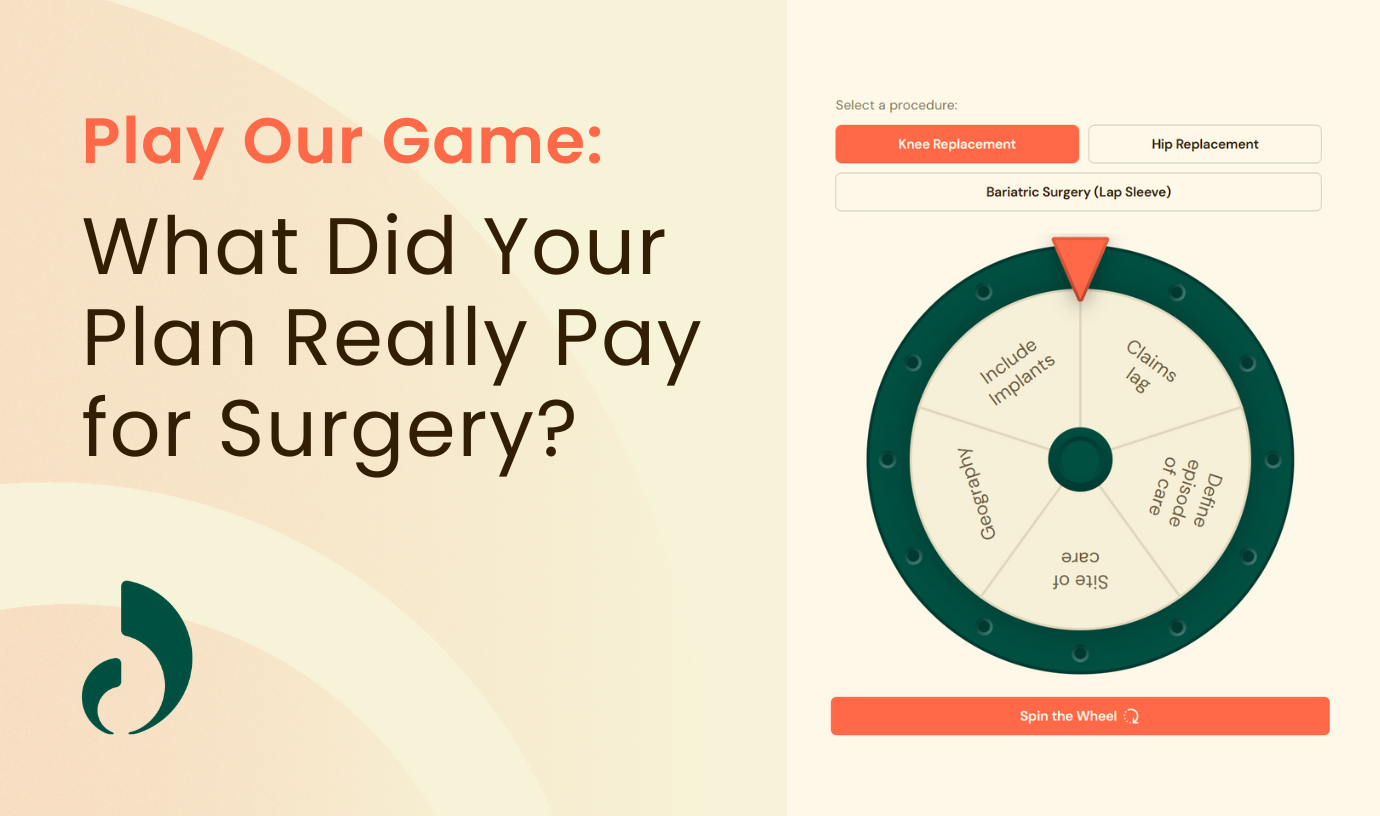We’ve all been there, sitting through new-hire orientation, overwhelmed by a flood of benefit options that barely register in the moment. All of these benefits feel abstract, like another checkbox on your onboarding to-do list, until you actually need to use them.
I talk to benefits leaders every week, and the most frequent question I hear is, “How do we get our employees to know what benefits we offer?” It’s usually an awareness problem – the average employer offers 25 different healthcare point solutions. I even talked to a benefits leader at our recent Specialty Care Summit who has 60! Back to the new-hire orientation example – this is overwhelming stuff. And let’s face it, it’s also pretty boring and confusing.
If we want employees to actually use and appreciate their benefits, benefits leaders need to think like marketers. They need to build a product marketing strategy that clearly explains the benefits package and more importantly – what’s in it for the employee. That requires simplifying long explanations full of clinical jargon into compelling sound bites they can absorb and tell their families about. It means meeting employees where they are by using multiple channels to get the message across.
And those messages have to be relayed consistently throughout the year. Just when you get tired of talking about it – that’s when they start listening. It means looking at metrics and changing course when your engagement efforts fall short.
The art of engaging employees to use their benefits isn’t about one big presentation during open enrollment. It’s about continuous, strategic communication. Just like marketers, benefits leaders need to move employees through the funnel, from creating awareness to consideration to actually using the benefit to help them consume better – and hopefully more cost effective – healthcare.
Launch an Omnichannel Marketing Strategy to Increase Benefits Utilization
When we talk about engagement, we need to take an omnichannel approach. There’s no one-size-fits-all solution. The way we connect with employees depends on who they are and how they work, whether they’re remote, onsite or somewhere in between.
You know your employees best, so use the tools that speak to them. Someone working on the line or in a classroom might miss an email, but they’ll definitely notice a sign by the time clock or in the breakroom. Meet them where they are with messages that catch their attention.
Don’t be afraid to embrace technology. HR leaders have more ways than ever to communicate with employees, from Slack and Teams messages to memes and text messages. Recording a quick video on your phone takes just minutes, something that would’ve taken hours to produce just a few years ago. Does your company have a benefits app – make sure your partners are showcased in a way that’s easy for the average employee to understand what they do.
I’ve talked to several leaders that have seen good success by combining paycheck and PTO details alongside the benefits information to force everyone to one place. Most won’t casually seek out information about the benefit plan, but they do want to log in to see how much PTO they have left. That can be a great way to surface the details and increase awareness.
That said, I’m a practical marketer. I love all the tech available today, but let’s be real: bathroom stalls are still one of the best places to get your message across. We can’t overlook these simple but effective methods. Use the tools you already have to make communication faster, easier and more engaging.
We also need to take advantage of internal events where benefits messaging fits naturally, like new-hire orientation videos, benefits fairs and family picnics. Every touchpoint provides an opportunity to educate employees about their benefits and reinforce how much you care about their well-being.

Combine Broad-Based, Targeted Marketing Tactics to Educate Employees about Benefits
When it comes to educating employees about benefits, I always suggest a balanced mix of broad-based and targeted marketing tactics. Broad-based promotions include the email you send out to all employees or a digital sign in the office, whereas targeted marketing leverages data to engage specific employee groups.
At Lantern, we deploy a mix of strategies to drive awareness with our entire member base and then drill down further with targeted marketing to reach the 15% of members who truly need surgery or infusion care in a given year.
For example, we’ll send general emails and postcards to all members, then look at claims data to identify employees who are experiencing joint pain, bariatric and other issues. We then communicate directly with those employees to explain how Lantern can help and how they can begin the process. What opportunities do you already have in the workplace where you can try out some of these 1:1 messages?
Target the “Chief Medical Officer” in the Family
Direct mail may seem old-school and ineffective, but believe me—it still works, and in some cases better than digital tactics.
I often hear from benefits leaders who say, “My employee is the plan subscriber, but it’s the spouse at home who serves as the Chief Medical Officer for the family.” Without a home mailer, they may never know about available services, and how they cover spouses and dependents, too.
Don’t just send a home mailer. Address it to the employee’s spouse. Or better yet, send a Birthday Card to the employee at home and cut through the stack of junk mail. Happy Birthday – Don’t forget to take advantage of all the great benefits we offer to help you and your family stay healthy and happy!
Recruit Employee Champions to Promote Your Health Benefits
Employees might be skeptical of some health benefits, but hearing a success story from a colleague boosts credibility in a way corporate messaging never can. Testimonials show the real, tangible impact of these benefits, proving they’re more than just promises on paper.
At Lantern, we start every all-company meeting by sharing a member’s success story as a reminder of the work we do and how it impacts millions of lives.
If you have an employee who has a wonderful experience, ask them to share their story. Make a video testimonial or write a success story highlighting how it made their life better. If they’re comfortable, ask them to speak about their experience during a company meeting.
Many Lantern clients have a dispersed population with a lot of workers in the field. They’ll leverage Employee Resource Groups (ERGs) or an internal wellness champion—a voice in the field—to get the word out. The champion meets with leadership and translates the benefit info in clear terms during safety meetings or breaks. This works really well for employees who don’t sit at a computer or distrust the internet in general.
Lantern Member Stories
Learn how employees are connected with the right surgery care and living healthier lives.
Group Similar Benefits Communications to Reduce the Noise
One of the biggest challenges with point solutions is that each one comes with its own campaign. Instead of bombarding employees, we need to connect the dots for them.
If your company offers a digital PT benefit like Sword for orthopedic injuries and a specialty care COE program, show employees how these benefits work together and make it clear how they can take advantage of both.
Instead of sending multiple messages independently, group similar benefits together. It not only improves the member experience, but it prevents death by a thousand cuts where employees completely tune out.
For example, Lantern works closely with our client’s onsite and Network primary care providers. We educate the care teams about the quality of our Network and encourage them to refer their patients to us when it makes sense. It’s a win-win for the employer and the employee.
Be Smart About Incentives and Plan Design to Get Employees to Use Benefits
Incentives are one of the best ways to get employees to engage with their health benefits. When there’s a clear reward, whether it’s waived cost share, a premium discount or extra PTO, employees are far more likely to act.
One of the top reasons employers hire companies like Lantern is to save money, but it only works when employees use the benefit. We encourage our employer partners to make the experience as cost-effective and beneficial as possible. Many employers waive all cost share to remove barriers, while also covering travel and lodging expenses.
This can be a game changer for employees who need care but can’t afford it. In fact, one study found that over a quarter of U.S. adults have skipped necessary medical treatment because of cost.
Also, think about whether you’re going to make the benefit mandatory or optional. If you offer an advanced primary care program or access to a center of excellence, requiring employees to get care through these partners delivers larger savings by shifting site of care away from an expensive inpatient hospital setting.
In fact, Lantern clients who require employees to use our network for bariatric, joint and spine surgery save an average of $50 per employee per month, versus $10 for a fully voluntary plan.
Establish KPIs and Measurement Results
With so much at stake, employers need to set clear KPIs for health benefit utilization to make sure their investment delivers results. Tracking metrics helps identify the engagement efforts that drive positive outcomes and spotlight where adjustments are needed.
Define what engagement means for your organization—completed appointments, cost savings, procedure avoidance, etc.— and build your communication plan around meeting your engagement goals. If you fall short of the plan, figure out why, pivot and continue to monitor.
Think Like a Marketer to Increase Benefits Awareness
Benefits leaders can’t just roll out great benefits and hope employees take notice. Think like marketers and promote them in a way that grabs attention, builds trust and makes it easy to take action. That means using multiple channels, simplifying complex information and meeting employees where they are.
When we think like marketers and focus on real engagement, we not only boost benefits participation, but also create a healthier workforce while lowering costs.




